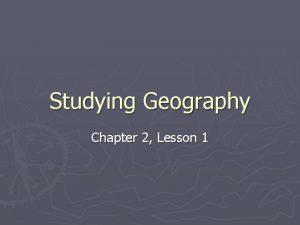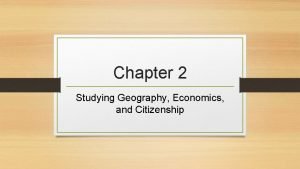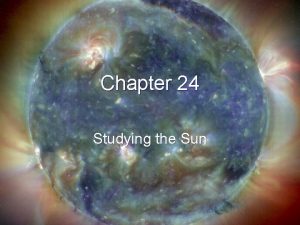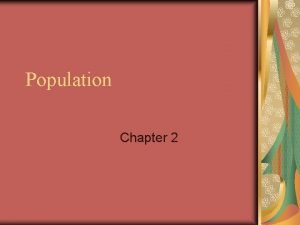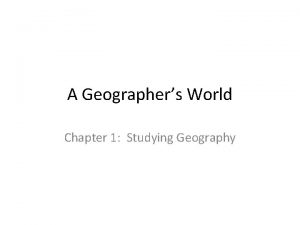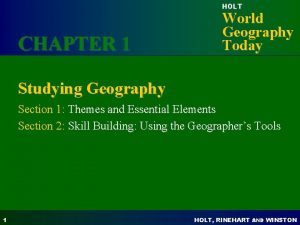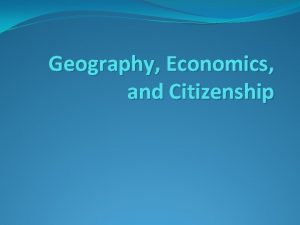Studying Geography Chapter 1 What is Geography Geography









- Slides: 9

Studying Geography Chapter 1

What is Geography? Geography is the study of everything on Earth, from rocks and rainfall to people and places. Geographers study how the natural environment influences people, how people's activities affect Earth, and how the world is changing. A landscape is the scenery of a place, including its physical, human, and cultural features.

Subfields of Geography Cartography- the study of maps and mapmaking. Meteorology- the study of weather. Many geographers work for governmental agencies. The largest employer of cartographers is the United States Geological Survey. They produce detailed maps of the country.

Types of Regions Formal- has one or more common features that make it different from surrounding areas. Functional- made up of different places that are linked together and function as a unit. Perceptual- regions that reflect human feelings and attitudes.

5 themes of geography Location- deals with the exact or relative spot of something on Earth. Place- includes the physical and human features of a location. Human-environmental interaction- covers the ways people and environments interrelate with and affect each other.

Movement- involves how people and things change locations and the effects of these changes. Region- organized Earth into geographic areas with one or more shared characteristic.

The Globe The lines that circle the globe in an east-west and north-south direction creates a grid system. This grid is made up of lines of latitude and longitude. Lines of latitude are also called parallels b/c they are always parallel to the equator and each other. Lines of longitude are also called meridians b/c they measure distance east and west of the prime meridian.

The Earth 4 Hemispheres: North, South, East, West 7 Continents: Africa, Antarctica, Asia, Australia, Europe, North America, South America (Asia = largest ; Australia = smallest) 4 Oceans: Atlantic, Arctic, Indian, Pacific

Graphs, charts, and pyramids Climate graph – shows the average temperatures and precipitation in a place. Population pyramid - shows the percentages of males and females by age group in a country’s population.
 Guided reading lesson 1 studying geography answer key
Guided reading lesson 1 studying geography answer key Chapter 2 lesson 1 studying geography
Chapter 2 lesson 1 studying geography Lesson 1 studying geography
Lesson 1 studying geography Chapter 24 studying the sun
Chapter 24 studying the sun Researchers who are studying a new shampoo formula
Researchers who are studying a new shampoo formula Importance of studying population
Importance of studying population Job ranking method example
Job ranking method example Juma rakat
Juma rakat Studying in sweden as an eu citizen
Studying in sweden as an eu citizen Studying our living planet
Studying our living planet
